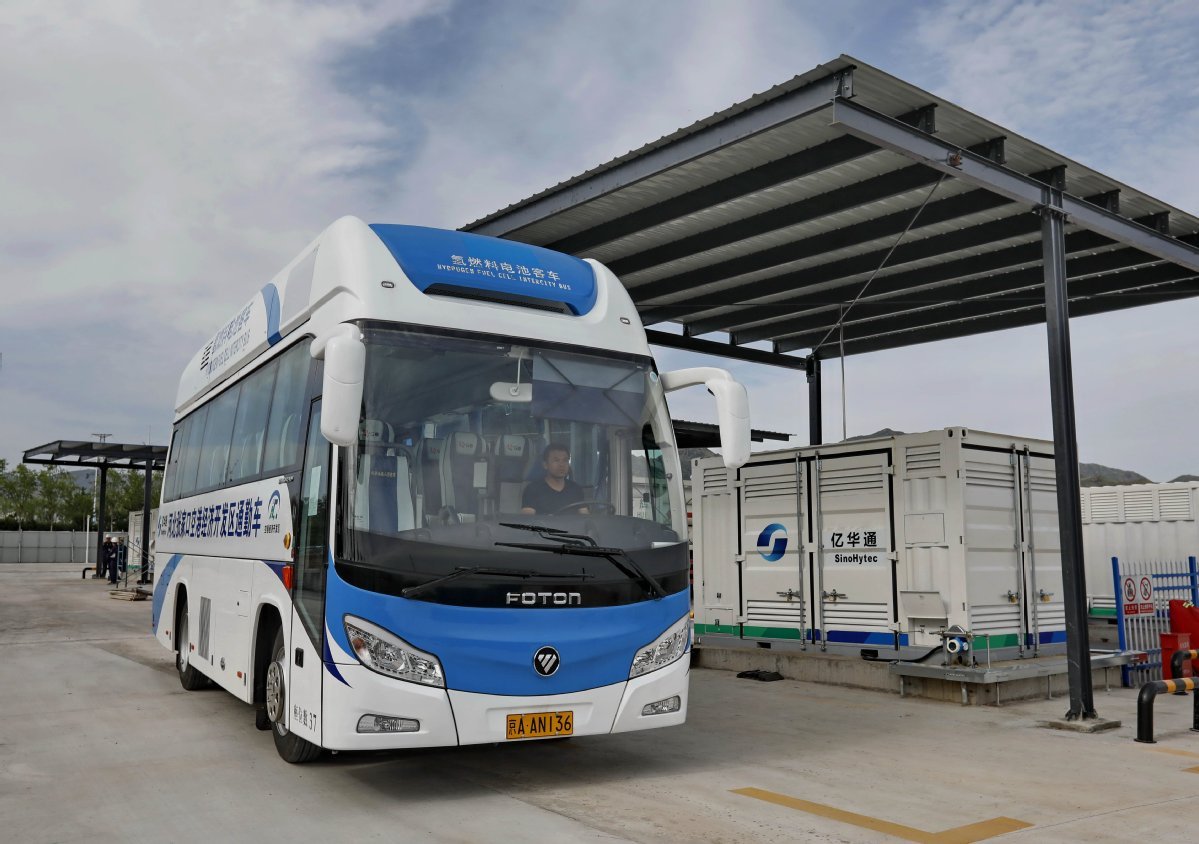Winter Olympics To Make The Periodic Table's #1 Element a Top Priority
How bad is the smog these days, really? Who is keeping tabs on the state of our drinking water? What has the government done about carbon emissions lately? In Beicology we turn our focus toward environmental news in the capital.
The 2008 Olympics saw massive expansions in Beijing’s transit infrastructure as the city added numerous subway stations to prepare for the influx of visitors. Now that the games are returning to Beijing in 2022, the host city of Zhangjiakou isn’t just extending its public transportation network, it’s making it greener.
Previously, the Beijinger reported on such initiatives as the CO2-powered ice rink that could remove as much greenhouse gas from the atmosphere as 1.2 million trees. Zhangjiakou is now expanding efforts toward a more sustainable Olympics to the city’s infrastructure, declaring that it will become a “first-class hydrogen energy city” by 2021, creating an ecosystem of hydrogen production and consumption within Hebei province.
What even is hydrogen energy?

Hydrogen in itself can be used as a carbon-neutral and highly efficient fuel – for example, it’s at least twice as efficient as a combustion engine at powering a vehicle. Unfortunately, there are no natural deposits on earth because the element pretty much immediately bonds with oxygen to create water. Hydrogen can, however, be used as a way of storing energy, making it a vital resource for enabling solar and wind technologies, whose excess power can and does go to waste due to problems of energy storage. In south China, for instance, it was estimated that the integration of hydrogen into the energy system could reduce capital returns on wind farms from an average of 11 years to just eight years. These are the kinds of advancements that make wind energy more attractive to investors and landowners who have the capability to produce it.
Still, only a small fraction (<5 percent) of hydrogen production is completely carbon-neutral. Globally, the majority relies upon natural gas, but in China, coal is still the preferred fuel as it is the cheapest and simplest method. And while this is the dirtiest way of making hydrogen, it is the cleanest way of using coal.
Zhangjiakou’s hydrogen ecosystem
Earlier this year, Zhangjiakou added 100 H-powered buses to its public transit fleet and plans to add more 1,500 more by 2021. It is also working to enable personal use of H-powered cars by installing hundreds of refueling stations around the city, including along the Beijing-Zhangjiakou expressway.

Beyond busing, the city is striving to become self-sufficient in its hydrogen production. Many manufacturers in south China are already able to make fuel cells, but at least 20 companies plan to enter the chemical park by 2021 to produce key parts of fuel cells and other equipment related to the industry. There is also an increasing need for storing the power from Zhangjiakou’s rapidly growing sustainable energy sector (wind and solar), which has increased 42 percent since 2015. Altogether, the industry is projected to be valued at RMB 6 billion by the time the Olympics roll around.
There are some challenges to overcome that stem from national policies, however. Hydrogen’s status as a hazardous chemical means that it can only be produced in specialized chemical parks and liquid hydrogen can only be transported for military purposes. That hasn’t stopped this Olympic city, however, which has laid out plans to continue its innovation with the periodic table's number one element until 2035.
READ: Beicology: Beijing Receives Good News From the Energy, Water, and Wildlife Sectors
More stories by this author here.
Email: joeyknotts@truerun.com
WeChat: jknotts
Images: fuelcellsworks.com, BBC, Phys.org, China Daily







